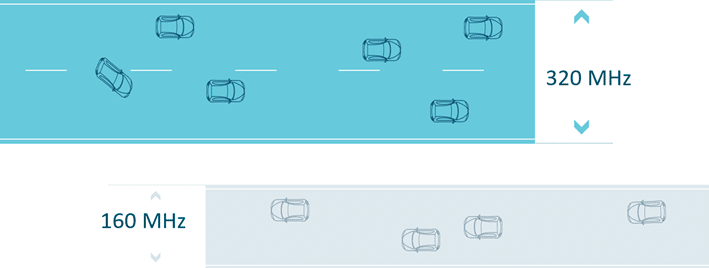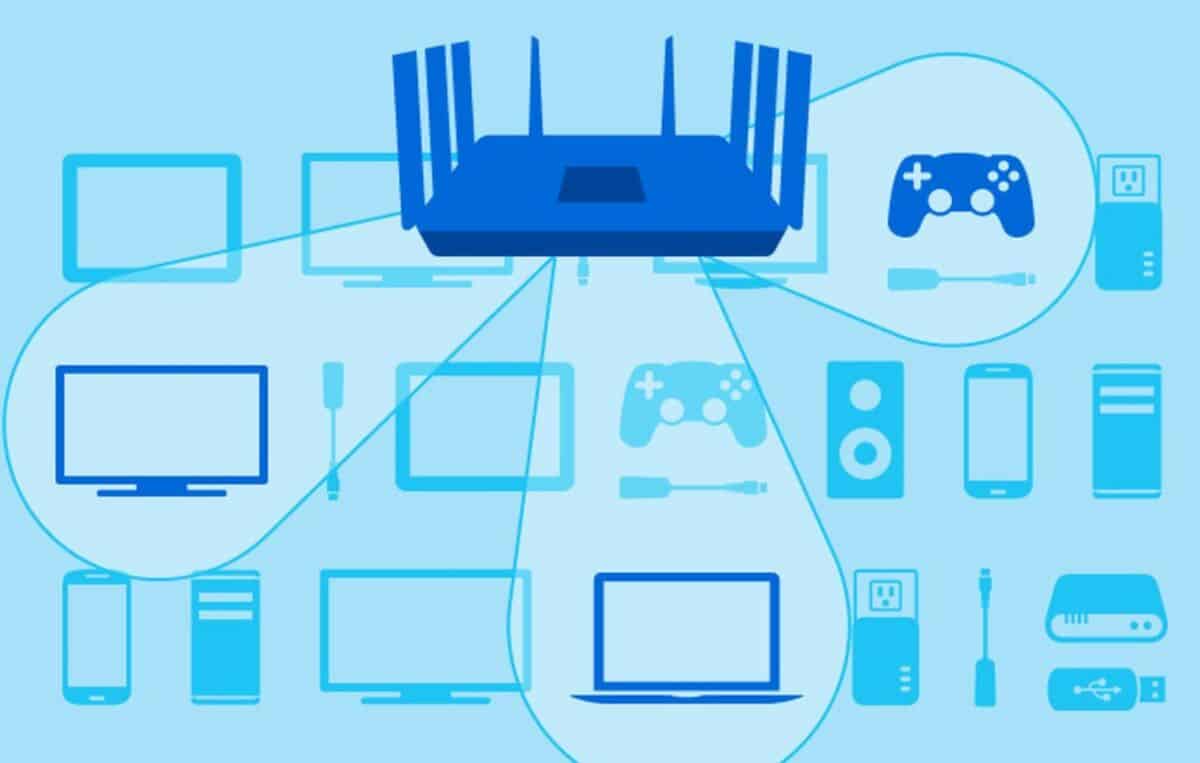Wi-Fi 7 replaces the Wi-Fi 6 and Wi-Fi 6E protocols. This advancement of the wireless standard promises increased speeds, lower latency, and improved network management when several devices are linked to it. WiFi 7 introduces new channel sizes, next-generation OFDMA, 4096-QAM modulation, 16-stream MU-MIMO, and a never-before-seen Multi-Link Operations capability.

Following WiFi 6 and WiFi 6E, which both contributed to the standard’s advancement, we are gearing up to welcome WiFi 7, the next generation of wireless networks. This final version of the standard adds new benefits and functions that will make WiFi a technology that provides an even better experience. According to MediaTek, there is a probability that WiFi 7 will become the equivalent of Ethernet. It would be the first time that wireless technology had surpassed wired technology. We encourage you to join us as we learn everything there is to know about WiFi 7.
WHAT IS WI-FI 7?
Wi-Fi 7, like its predecessors, is an IEEE 802.11 set of standards for local area wireless networks. It is known as 802.11be, as opposed to 802.11ax for WiFi 6 or 802.11ac for WiFi 5. WiFi 7 promises to be quicker, less congested, and less prone to delay than WiFi 6 or WiFi 6E due to the incorporation of new technology and enhanced management of WiFi channels.
WHAT ARE THE TECHNICAL SPECIFICATIONS OF WI-FI 7?
WiFi 7’s specifications are already known and should not change between now and its release. As with each generational jump, the maximum theoretical speeds allowed by the standard are increasing. Wi-Fi 7 would be able to reach up to 46 Gb/s, which is significantly faster than WiFi 6, which is limited to 9.6 Gb/s. Individuals may not find this benefit extremely useful because most Internet connections do not deliver such performance. However, Wi-Fi 7 could be a game changer in terms of throughput for business or public WiFi networks.
WiFi 7 uses three frequency bands: 2.4 GHz, 5 GHz, and 6 GHz. It therefore integrates the key innovation introduced by WiFi 6E, which is compatibility for 6 GHz (between 5,945 and 6,425 MHz), allowing you to clean overcrowded beaches, especially in densely populated places.
The other notable feature of Wi-Fi 7 is the increase in channel size to 320 MHz, which is twice as much as in WiFi 5 and WiFi 6. When compared to a road network, these ultra-wide channels are similar to a three or four lane highway, whereas the 160 MHz channels are more akin to a national highway. Because the highway allows more vehicles to pass smoothly and rapidly, the 320 MHz channels can transfer more data at the same time, resulting in higher performance.

This switch to 320 MHz channels, among other things, enables the previously indicated speeds to burst. A channel width of this size also helps to reduce delays and, as a result, latency.
WHAT ARE THE BENEFITS OF WI-FI 7?
WiFi 7 adds new features and improves on those that already exist. OFDMA is a data multiplexing and coding method that is currently present on WiFi 6. When compared to WiFi 5, this reduced latency by around 25%, and the latest generation OFDMA can cut it by another 20%. To accomplish this, it will better handle what are known as RUs (Resource Units), which are units that divide packets and send them faster.
Read also : NoKia G60 Full REVIEW
With WiFi 7, these RUs can be scaled and distributed more efficiently across devices to optimize the network. Not only that, but an RU that cannot be exploited for one reason or another could previously prevent the exploitation of the succeeding RUs. Because of WiFi 7, such a failure has less of an impact on the management of other packets, resulting in lower overall latency.
The modulation of the signal’s amplitude is likewise undergoing a revolution. WiFi 6 quadrupled WiFi 5 flows (256-QAM to 1024-QAM), and WiFi 7 quadrupled WiFi 6 flows from 1024-QAM to 4096-QAM. Moving from a 10-bit to a 12-bit architecture, and thus increasing the number of information bits carried per hertz, increases bandwidth capacity, which helps to enhance throughput.
MU-MIMO is no different. If the core premise of the technology added with WiFi 6 remains unchanged, the antennas of a WiFi 7 compatible router may now manage up to 16 data flows, up from 8 now. An upgrade that will primarily benefit high-end network equipment and will aid in the improvement of residential wireless connection quality.

Finally, the last key feature added with WiFi 7 is Multi-Link Operations (MLO), which allows a compatible device to use two frequency bands simultaneously. Because of aggregation, a WiFi 7 terminal, such as a smartphone or computer, will be able to connect to both 2.4 GHz and 5 GHz bands, for example. This should enhance available bandwidth, throughput and most importantly latency.
What’s interesting here is that, in addition to avoiding saturation, a device will be able to take advantage of the advantages of different frequency bands: we know that 2.4 GHz has limited speeds but goes the distance, whereas 5 GHz is much faster but runs out quickly as you move away from the router. It should be noted that it is currently possible to combine multiple frequency bands under the same SSID, but the device is not connected to all of them at the same time: it only connects to the one that provides the highest performance, which is considerably superior to what MLO aggregation provides.
WHEN WILL WI-FI 7 BE AVAILABLE?
What’s interesting here is that, in addition to avoiding saturation, a device will be able to take advantage of the advantages of different frequency bands: we know that 2.4 GHz has limited speeds but goes the distance, whereas 5 GHz is much faster but runs out quickly as you move away from the router. It should be noted that it is currently possible to combine multiple frequency bands under the same SSID, but the device is not connected to all of them at the same time: it only connects to the one that provides the highest performance, which is considerably superior to what MLO aggregation provides.
The first compatible gadgets should be available on this date. However, it takes years to democratize a standard, and users do not renew their equipment every year, and even less for home network equipment. Furthermore, precursor products are frequently pricey, preventing them from gaining popularity rapidly. This is why operators who offer internet boxes and routers, as well as makers of smartphones, PCs, Smart TVs, and TV boxes, are patient before adopting a new standard, with just a few high-end goods benefiting from it quickly after its implementation.
Read also : How to Choose Best OnePlus Smartphone 2022
For example, WiFi 6, which was released in 2019, only began to gain traction in houses in 2021/2022. If WiFi 7 is to arrive in 2024, we should have to wait until at least 2025 or 2026 to see it in action on a big scale. However, early adopters will be catered to, with the first WiFi 7 compatible smartphones available in 2024. Samsung has been accustomed to being the first to adopt a new generation of WiFi, and it may do it again with the Galaxy S24 series, which is set to launch in early 2024. Intel also stated that the first WiFi 7 laptops will be available in 2024, but the number of models supporting the new protocol will be significantly higher in 2025.


